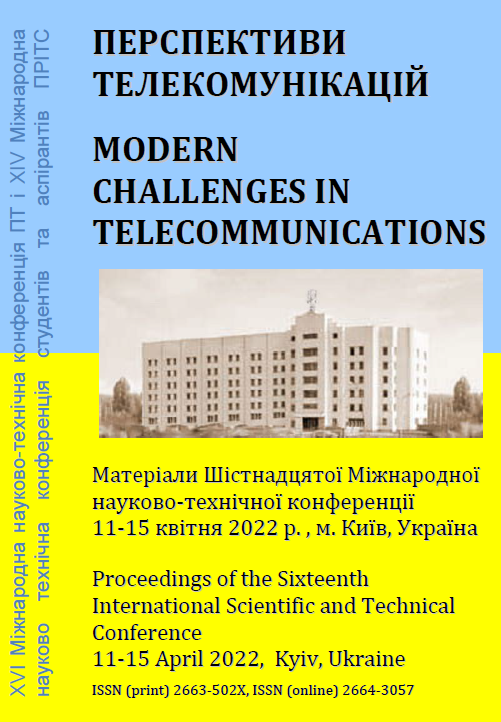МЕТОД ПРОСТОРОВОЇ СЕЛЕКЦІЇ СИГНАЛІВ НА ОСНОВІ ІНФОРМАЦІЇ ПРО КУТОВІ КООРДИНАТИ ДЖЕРЕЛ ВИПРОМІНЮВАННЯ
Ключові слова:
адаптивна просторова селекція, джерела радіовипромінювання, діаграма спрямованостіАнотація
Student of the Educational and Scientific Institute of Telecommunication Systems, Igor Sikorsky Kyiv Polytechnic Institute, UkraineПосилання
Макаренко В., Потемкин Е. Технологическая эволюция ВЧ-устройств систем 5G миллиметрового диапазона, Беспроводные технологии, №2, 2019, с.35-39.
Монзинго Р.А., Миллер Т.У. Адаптивные антенные решетки: Введение в теорию: пер. с англ. – М.: Радио и связь, 1986. 448 с.
Адаптивные антенные решетки. Учебное пособие в 2-ч частях. Часть 2 / В. А. Григорьев и др.; ун-т ИТМО; общ. Ред . В. А. Григорьев. Санкт-Петербург, 2016. 118 с.
Авдєєнко Г.Л., Якорнов Є. А. Спосіб просторової селекції джерел радіовипромініювання в довільній хвильовій зоні на основі модифікованого алгоритму Кейпона. Одинадцята міжнародна науково-технічна конференція «Проблеми телекомунікацій» : зб. матеріалів конф. 18-21 квіт. 2017р. Київ: КПІ ім. Ігоря Сікорського, 2017. С.232-234.
##submission.downloads##
Опубліковано
Як цитувати
Номер
Розділ
Ліцензія

Ця робота ліцензується відповідно до Creative Commons Attribution 4.0 International License.
Authors who submit to this conference agree to the following terms:a) Authors retain copyright over their work, while allowing the conference to place this unpublished work under a Creative Commons Attribution License, which allows others to freely access, use, and share the work, with an acknowledgement of the work's authorship and its initial presentation at this conference.
b) Authors are able to waive the terms of the CC license and enter into separate, additional contractual arrangements for the non-exclusive distribution and subsequent publication of this work (e.g., publish a revised version in a journal, post it to an institutional repository or publish it in a book), with an acknowledgement of its initial presentation at this conference.
c) In addition, authors are encouraged to post and share their work online (e.g., in institutional repositories or on their website) at any point before and after the conference.

